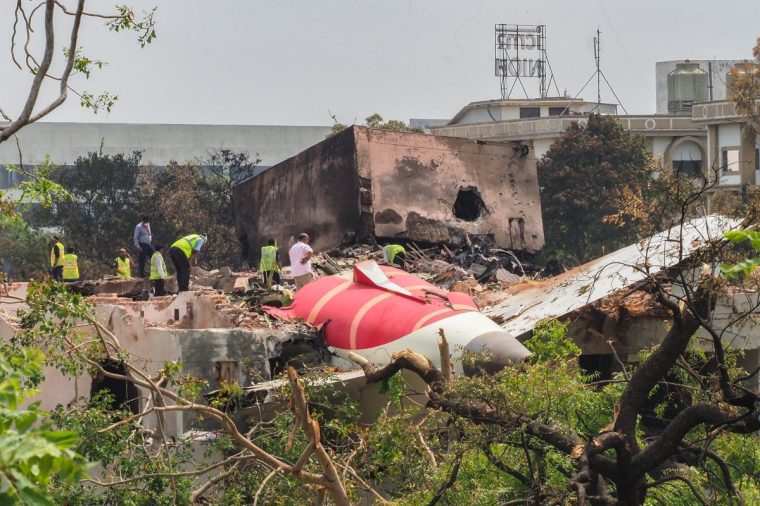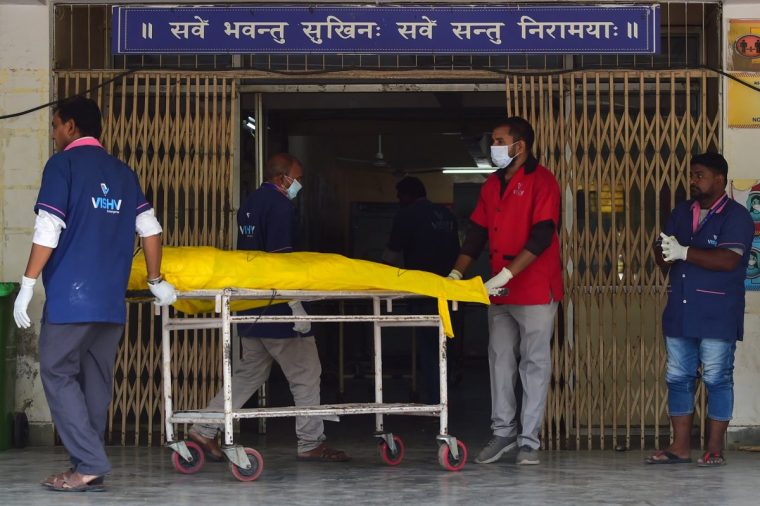Identification process could take weeks, officials warn, as anguished relatives cling to fading hope
Hundreds of police officers stood guard on Friday at the crash site and the Civil Hospital in Ahmedabad, where a survivor and dozens of people injured people in the devastating Air India disaster were being treated. Outside the hospital gates, anguished families clung to fading hope, desperate for news of missing loved ones.
The Boeing 787-8 Dreamliner, operating as Flight AI171, crashed shortly after take-off from Sardar Vallabhbhai Patel International Airport, killing 241 of the 242 people on board.
The aircraft issued a Mayday call before it lost altitude and slammed into a building in the Meghaninagar area on Thursday afternoon, triggering a massive explosion and a wall of fire and smoke.
Authorities said most victims were burnt beyond recognition, complicating the identification process. “Some bodies were reduced to mere fragments of flesh due to the intense heat,” an official, who is part of the investigation, said.
“DNA samples have been collected, but the process could take weeks, especially as some families have yet to come forward.”

Among the deceased was Arjunbhai Manubhai Patoliya, a resident of Wadia in Gujarat’s Amreli district. He had travelled to India to fulfil his late wife’s final wish, to have her ashes immersed in her ancestral village pond. On 2 June, surrounded by family, he performed the rites. Twelve days later, he boarded AI171 to return to his daughters in London. He never made it. Now orphaned, the two girls have lost both parents within 18 days.
At least five medical students, a postgraduate resident doctor, and the wife of a senior specialist at BJ Medical College were killed after the plane crashed into the doctors’ hostel, according to Dr Divyansh Singh, of the Federation of All India Medical Associations. More than 60 medical students remain in hospital.
Police have cordoned off the wards, citing privacy and security concerns. Media access has been barred, prompting frustration among local journalists. “They are underreporting the casualties, and that’s why we’re being kept out,” claimed one reporter.

Dozens of families gathered outside the hospital, wailing and seeking answers from the authorities about their loved ones. “No one is speaking to us. The officials are telling us an investigation is going on and don’t provide us any clarity about the bodies,” Mukeshbhai Patel, whose nephew was in the plane, told The i Paper.
Sameer Shaikh, who lives in Pune, flew to Ahmedabad with his family to collect the body of his son Irfan, who was an Air India crew member.
Even after the identification of Irfan’s body, he was not allowed to take him home. “Officials didn’t allow me to take my son’s body back. They intend to hand over the body after DNA sampling of all the victims is completed. The DNA sampling, as per officials, will take weeks, and why should my son’s body be kept here? He deserves an honourable burial now.”

At the crash site, investigators were sifting through debris. Both black boxes were recovered on Friday, one of them damaged but still expected to yield data.
G.V.G. Yugandhar, Director General of India’s Aircraft Accident Investigation Bureau, confirmed the flight data and cockpit voice recorders would undergo joint analysis, with American investigators arriving on Sunday.
“This is a modern aircraft equipped with extensive sensors and automation,” an official said. “The data should help us reconstruct the moments leading up to the crash.”
Natarajan Chandrasekaran, chairman of Tata Group, which owns Air India, described the tragedy as one of the darkest days in the company’s history. “We want to understand what happened. We don’t know right now, but we will,” he told employees in a letter.

The Directorate General of Civil Aviation (DGCA) has ordered immediate inspections across Air India’s Boeing 787-8 and 787-9 fleets. The one-time checks, effective from June 15, include fuel system diagnostics, engine actuator tests, oil and hydraulic inspections, and cabin air compression reviews.
“If you look at the Dreamliner’s history, notwithstanding controversies and various technical aspects in the past, it has served the aviation industry well. This is the first instance of a Dreamliner aircraft being involved in an accident,” Jitendra Bhargava, former executive director of Air India, told PTI.
Video footage circulating online shows the aircraft climbing with its nose up before descending abruptly and exploding on impact.
Experts say it is too early to determine whether mechanical failure, human error, or another factor caused the tragedy.
Assistant Professor Naresh Soni of the National Forensic Sciences University, who leads the forensic identification team, said: “All recovered remains have been transferred to the post-mortem unit. Our forensic teams are conducting DNA testing, and identification will be confirmed before remains are returned to families.”
Soni added that rising temperatures were complicating the process, increasing the risk of sample degradation. “Time is critical,” he said. “We are working as quickly and accurately as possible.”
